The Science
BASIC is a curated N–P–K microbial consortia that improves nutrient availability in the root-zone and conditions the rhizosphere.
Science lens =
Availability × Roots × Discipline.`
What is inside BASIC
(and why these three)
Azotobacter — free-living nitrogen-fixing bacteria (supports N availability).
PSB (Phosphate-Solubilizing Bacteria) , phosphorus-solubilizing bacteria (supports P availability).
K-Mobilizers (KMB) — potassium-mobilizing bacteria (supports K availability from minerals).


Azotobacter:-
Technical Profile (N support)
Identity & traits
Free-living, aerobic, root-associated N fixer; commonly Azotobacter chroococcum group.
Forms cysts under stress for survival; produces exopolysaccharides (EPS) that aid soil aggregation.
Key enzymes & metabolites
Nitrogenase (N₂ → plant-usable N near roots).
May produce IAA-like compounds (auxin-type), siderophores, vitamins in small amounts—supporting root hair initiation and micronutrient dynamics (label-safe: “supports root activity”).
Soil & plant functions
Contributes to N availability in rhizosphere; supports early vigor in non-legumes.
EPS helps micro-aggregation → better aeration and moisture films around roots.
Best-fit conditions
pH: ~6.0–7.5 (tolerates ~5.5–8.0).
Moisture & air: Moist, non-waterlogged beds; oxygen is essential.
Carbon: Gains from FYM/vermicompost mixing (50–100 kg/acre).
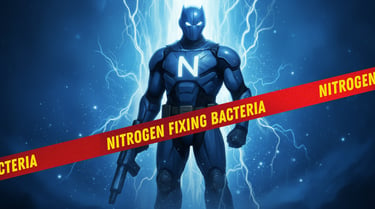

Practical Do/Don’t
✅ Apply with FYM/vermi; irrigate lightly if dry.
❌ Avoid heavy urea at the exact same time/place; stage sensibly.
❌ Avoid bactericides/fungicides in the 5–7 day window around application.
What farmers notice
Better establishment, root hair activity, steady color early on.
PSB:-
Technical Profile (P support)
Identity & traits
Mixed genera (e.g., Bacillus, Pseudomonas types) that solubilize P and can mineralize organic P.
Key enzymes & metabolites
Organic acids (e.g., gluconic, citric) → lower pH in microsites; ligand exchange/chelation to release P.
Phosphatases/phytases → convert organic P to orthophosphate.
Soil & plant functions
Converts fixed/insoluble P to orthophosphate at the root surface.
Supports early growth and reproductive initiation in P-sensitive crops.
Best-fit conditions
Moisture: Steady moisture after application; avoid prolonged dry surface.
Carbon: FYM/vermicompost improves persistence and effect.
Lime separation: Keep 10–14 days away from liming in the same band/zone.
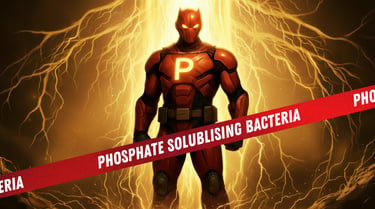

Practical Do/Don’t
✅ Basal or early vegetative timing; irrigate lightly if dry.
❌ Don’t tank-mix with chemical sprays.
What farmers notice
Deeper green leaves, better rooting, and balanced growth without forcing high P doses.
K-Mobilizers (KMB):- Technical Profile (K support)
Identity & traits
Mixed genera able to mobilize K from silicate minerals (feldspar/mica).
Often produce EPS, aiding soil aggregation and mineral–root contact.
Key processes
Acidolysis & chelation → weathering of K-bearing minerals; release of K⁺ into exchangeable pools.
EPS → improved soil structure and moisture retention around roots.
Soil & plant functions
Gradual K release supports turgor, stalk strength, lodging resistance, and even filling (with adequate irrigation).
Best-fit conditions
Moisture: Regular moisture (not puddled); avoid dry crusting.
Carbon: FYM/vermicompost aids contact and persistence.
Works across textures; visible value in K-hungry light to medium soils.
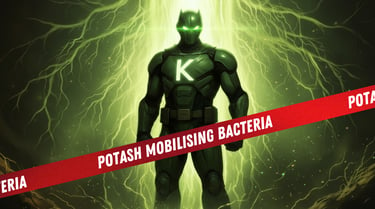

Practical Do/Don’t
✅ Use routinely across seasons; K mobilization is steady, not instant.
❌ Do not expect large jumps in a single sampling cycle; track trend.
What farmers notice
Firmness, leaf stance, uniform filling under good irrigation; stronger stalks/canes where genetics allow.
Rhizosphere Conditioning - "The Hidden Lever"
What it means
The rhizosphere is a thin soil layer around roots where exudates + microbes change chemistry and physics.
What BASIC supports
Root hair density and exudation (natural sugars/acids) → improves nutrient contact.
Soil aggregation via EPS → better porosity and moisture films.
Creation of micro-sites where N, P, K are root-available.
Outcome pattern
Earlier establishment → deeper/finer roots → uniform canopy → more predictable finish under good agronomy.
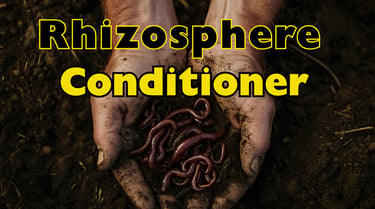

Environmental Window (simple ranges to control)
pH: Best 6.0–7.5 (tolerates ~5.5–8.0).
Moisture: Keep moist, not flooded; light irrigation helps after application.
Aeration: Avoid waterlogging; ensure drainage in heavy soils.
Organic matter: Always mix with FYM/vermicompost (50–100 kg/acre).
Salinity: If EC is high, leach salts before application where feasible.
Heat/sun: Mix in shade; don’t leave the blend in hot sun.


One-Acre Protocol
(and the science behind it)
Dose: 4 kg BASIC per acre.
Mix: With 50–100 kg FYM/vermicompost in shade until uniform.
Apply: Broadcast before sowing/planting or as an early vegetative top-dress.
Moisture: Ensure soil has some moisture; give light irrigation if dry.
Gaps: Keep 5–7 days away from bactericidal/fungicidal sprays.
No tank mixes: Do not mix with pesticides or chemical fertilisers; BASIC is a soil application.
Why FYM/vermicompost? Carbon and shelter for microbes, better contact with soil and roots, support for persistence.


"INM Integration"
Working with Fertilizers
Nitrogen (Urea/others): Follow soil test; avoid heavy urea at the same moment/spot as BASIC.
Phosphorus (DAP/SSP): BASIC supports P availability; still follow recommended rates and placement. Keep lime away in time/zone.
Potassium (MOP): BASIC mobilizes native K; keep MOP as per soil test where K is low.
Micronutrients: Apply as needed; no tank-mixing with BASIC.
Organics/Bio-stimulants: Seaweed/humics can be scheduled near irrigation to support roots and microbes.
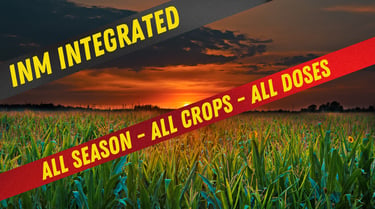

Safety & Compliance
For Agriculture Use Only.
Store cool, dry, shaded; protect from direct sunlight; use before expiry.
BASIC supports nutrient availability and rhizosphere function as part of INM.
BASIC does not replace chemical fertilisers and makes no pesticidal/disease-cure claims.
“Biodiversity increase” is context-dependent; we say supports soil biology.

